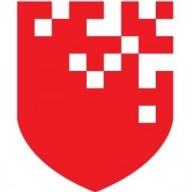


RedSeal and Armis compete in cybersecurity management and threat detection. RedSeal appears to have the upper hand in network visualization and security posture analysis, while Armis is favored for its advanced device monitoring in IoT environments.
Features:RedSeal provides robust network modeling, risk prioritization, and insightful security posture analysis. Its network visualization capabilities enable organizations to understand their security landscape comprehensively and address vulnerabilities efficiently. Armis offers continuous, agentless device tracking, focusing on enhancing security for IoT and unmanaged devices. It provides extensive device visibility, risk assessment, and intrusion detection capabilities.
Room for Improvement:RedSeal could improve the user interface to enhance user experience and simplify configuration processes. Better integration with third-party tools could provide users with more flexibility. Automated updates to minimize manual intervention would be beneficial. Armis could enhance scalability to better support large networks. Improved analytic reporting capabilities would aid in data interpretation. Expanding device compatibility and integration with more platforms would increase its usability in various environments.
Ease of Deployment and Customer Service:RedSeal generally requires more initial configuration but offers comprehensive support and documentation that helps with the complex deployment process. Armis is noted for its straightforward deployment, benefiting from minimal device interference. It offers responsive customer service, making it easier to manage post-deployment.
Pricing and ROI:RedSeal's setup cost may seem high initially, but its long-term visibility and security insights provide a strategic advantage with substantial ROI. Armis presents a competitive pricing model with a focus on rapid ROI, ideal for organizations needing quick IoT security integration. Its cost-effective solution supports faster deployment and immediate benefits in device security management.



| Company Size | Count |
|---|---|
| Small Business | 4 |
| Large Enterprise | 6 |
| Company Size | Count |
|---|---|
| Small Business | 1 |
| Midsize Enterprise | 1 |
| Large Enterprise | 7 |
Zafran Security integrates with existing security tools to identify and mitigate vulnerabilities effectively, proving that most critical vulnerabilities are not exploitable, optimizing threat management.
Zafran Security introduces an innovative operating model for managing security threats and vulnerabilities. By leveraging the threat exposure management platform, it pinpoints and prioritizes exploitable vulnerabilities, reducing risk through immediate remediation. This platform enhances your hybrid cloud security by normalizing vulnerability signals and integrating specific IT context data, such as CVE runtime presence and internet asset reachability, into its analysis. No longer reliant on patch windows, Zafran Security allows you to manage risks actively.
What are the key features of Zafran Security?
What benefits can users expect from Zafran Security?
In industries where security is paramount, such as finance and healthcare, Zafran Security provides invaluable protection by ensuring that only exploitable vulnerabilities are addressed. It allows entities to maintain robust security measures while allocating resources efficiently, fitting seamlessly into existing security strategies.
Armis is a comprehensive cybersecurity solution used for continuous monitoring and threat detection across IT and IoT devices. It excels in spotting vulnerabilities, managing device compliance, and tracking assets to enhance security protocols and network management. Key features include real-time threat detection, comprehensive visibility, and granular risk assessments. Armis boosts organizational productivity by streamlining workflows and enhancing operational accuracy.
RedSeal’s network modeling and risk scoring platform builds an accurate, up-to-date model of an organization’s entire, as-built network to visualize access paths, prioritize what to fix, so you can target existing cybersecurity resources to protect your most valuable assets. With RedSeal’s Digital Resilience Score, decision makers can see the security status and benchmark progress toward digital resilience.
We monitor all Risk-Based Vulnerability Management reviews to prevent fraudulent reviews and keep review quality high. We do not post reviews by company employees or direct competitors. We validate each review for authenticity via cross-reference with LinkedIn, and personal follow-up with the reviewer when necessary.